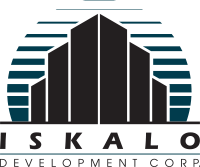Workspaces keep changing–and improving–as the world learns more about workplace productivity and design. The COVID-19 pandemic proved that many jobs can be done from the comfort of your home or on a hybrid schedule. This newfound realization changed in person office environments too.
Even though traditional commercial office spaces are still common, coworking and flex spaces keep popping up. Why? These unique workspaces have benefits for remote workers, like a sense of workplace community. Commercial offices are turning to dynamic work environments to provide similar flexibility, comfort, and community to coworking or flex spaces.
What is a Dynamic Work Environment?
A dynamic work environment focuses on three major elements: micro-space, the space at large, and the overall aesthetic. When these three pieces are taken into consideration separately and together, any workspace can become a more flexible, productive environment.
This means that your business can’t cut corners with design. It has to really look at the little things–the micro-space–and then step back and absorb the room as a whole.
Pros of the Dynamic Working Model
Sense of Community
Employees feel genuinely appreciated when their needs are met. This can mean adding standing desks or opening up the space so everyone is recognized–and has room to stretch and move! Employees are more likely to feel at home in their workspace when they feel accepted and comfortable.
Better Work/Life Balance
Flexible workspaces with accommodating schedules provide employees with less stress both in the office and in their own personal lives. Work environments with dynamic elements help with this balance between work and life. Dynamic elements may include more space around desks for stretching or more sitting areas for breaks.
Cons of the Dynamic Working Model
Communication Concerns
When workers have more flexible schedules, this means not everyone may be physically in the office space at the same time–or it may be hard to make it so everyone is. In the wake of the pandemic–when video conferencing began its rise to fame–it was necessary to use this technology. However, if everyone is given the same flexibility, it can be hard to maintain standard operating hours for customers. There is a lot of useful technology for virtual meetings, but in-person communication is often more effective.
Excess Sounds
A dynamic work environment often means fewer closed-off cubicles and a more open floor plan. Though this can benefit productivity and community within an office, it doesn’t always provide comfort for every employee. Everyone has a unique style of working and when there is no separation in an office, the space can get loud quickly. Those sounds may include white noise–fans, coughing, keyboards–or employees talking on the phone or to one another. For those who need complete silence or few distractions throughout the day, the dynamic working model may not work.

